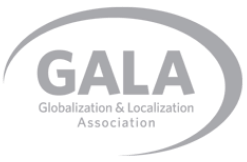
The translation field is quite extensive and includes a range of services, such as translation, transcription, interpreting, automated translating and localization testing. This article will cover two forms widely used by the corporate market: voice-over and subtitling. Just like the other services, these have certain peculiarities that warrant special attention, especially with regard to choosing a specialized professional. First and foremost, it’s important to understand the difference between the two.
Video voice-over is overlaying the original speech in an audiovisual piece, such as advertisements and institutional videos, with the audio translated into a second language, the target language.
Carried out in a studio by professional voice talents who act out and record the text, this activity also includes lip syncing. This consists of adapting lines so that the words remain synchronized with the lip articulation of the original spoken text, keeping dialogue natural.
This attention is necessary because a translated sentence might end up much longer or much shorter than in the original language. It is therefore essential for the translator to have the freedom to replace terms with synonyms to ensure that the translated text is aligned with the timing of speech, without impairing the original meaning.
The subtitling service in turn involves the insertion of translated subtitles in sync with the original speech, which is also used in institutional videos, especially training programs and product demos. For subtitling to be considered appropriate, it needs to be synchronized with the timing of speech in the audio. Hence, to achieve a good result, the translator may need to adapt passages of text, always retaining accuracy in relation to the original message.
Now that you know the differences between these two types of translation services, it warrants emphasis that they demand a great deal of concentration from the translator, as well in-depth knowledge of the languages involved. That’s why professional translation agencies offering these services rely on native translators specialized in a variety of fields.
They also have a structure that allows each project to be monitored from beginning to end by qualified professionals, in order to ensure the quality of the finished product. One good example in this case is the Quality Control team, responsible for reviewing the subtitled text, comparing the original transcription with the translation and confirming that it is properly synchronized.
For all of these reasons, it is crucial to find out which procedures will be adopted for your project when hiring a translation partner. Thus, you will be certain to receive the best quality material to earn new markets!
About Netwire
Created in 2000, Netwire provides translation and localization services into any language. With offices in Brazil and Argentina, the company serves approximately 25 market segments and has a network of hundreds of native translators, specialized in different business fields, residing all over the planet. In the past five years alone, Netwire processed over 110 million words, delivering an average of 400 projects per month.








